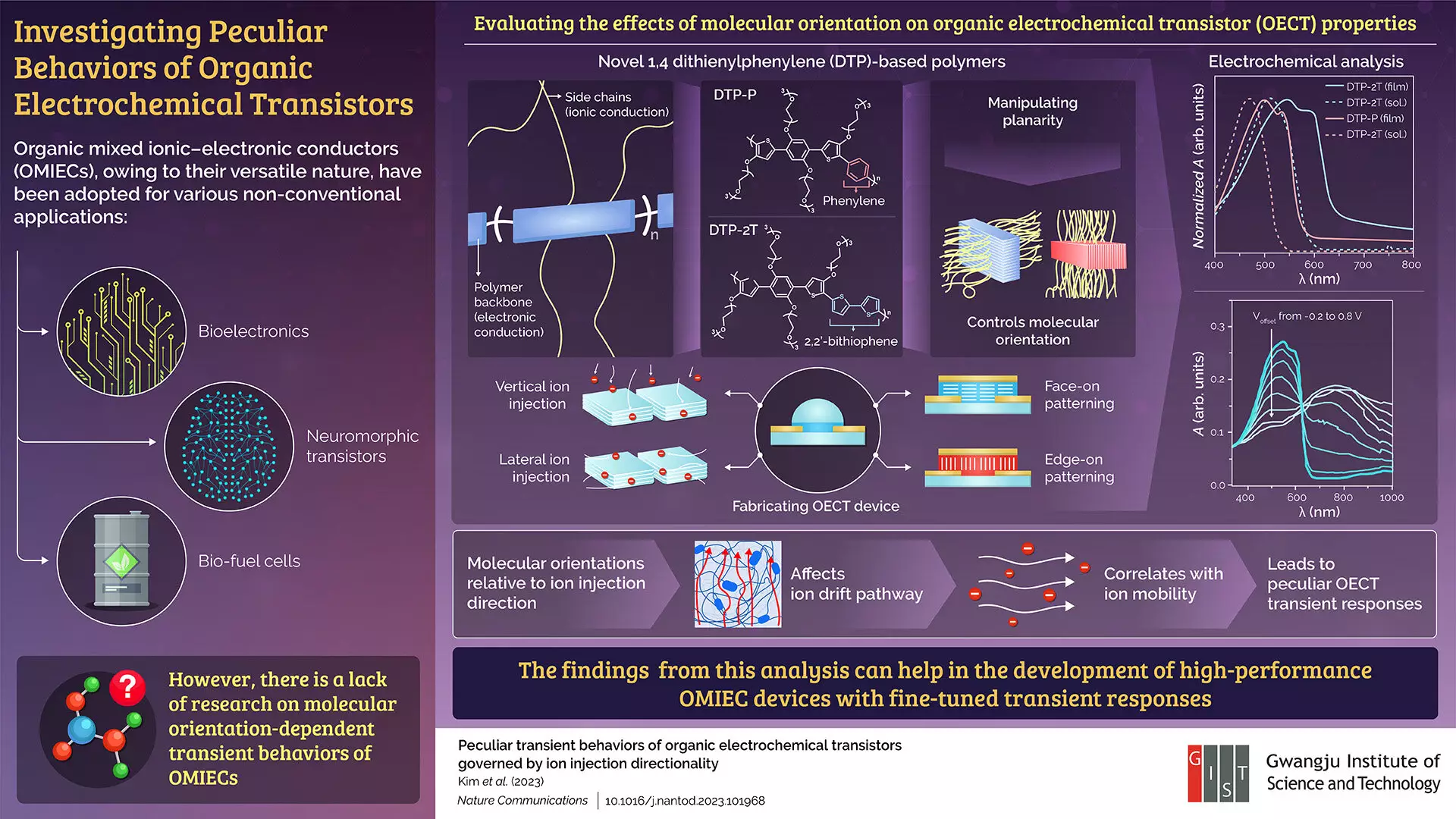Organic mixed ionic-electronic conductors (OMIECs) have garnered significant attention in recent years due to their unique two-in-one electronic and ionic conduction properties, making them ideal for non-conventional applications such as bioelectronics, neuromorphic computing, and bio-fuel cells. However, to ensure broader acceptance and utilization of these materials, it is crucial to diversify their properties and develop techniques that allow for application-specific customization. One essential aspect of this process involves evaluating the various properties of OMIECs. Despite the rising popularity of OMIECs, there remains a significant research gap in understanding the molecular orientation-dependent transient behaviors of these conductors.
A team of researchers from Korea and the U.K., led by Professor Myung-Han Yoon from the School of Materials Science and Engineering at Gwangju Institute of Science and Technology, embarked on a study to bridge this knowledge gap. Their recent research, published in Nature Communications on 28 November 2023, aimed to explore the peculiar transient behaviors of OMIECs governed by variations in molecular orientation using an organic electrochemical transistor (OECT) – a platform that mimics the computing mechanisms of neurons and synapses in spiking neural networks (SNNs).
Synthesis and Analysis of OMIECs
To conduct their study, the researchers synthesized two new OMIECs called DTP-2T and DTP-P, which were based on the 1,4-dithienylphenylene (DTP) core with co-monomer units, 2,2′-bithiophene and phenylene, respectively. By manipulating the polymer backbone planarity, they were able to control the dominant molecular orientation of the mixed conductor system. The researchers then fabricated OECT devices using the DTP polymer and subjected them to electrochemical analysis.
The initial findings of the study indicated that despite having different molecular orientations, both DTP-2T and DTP-P exhibited similar electrochemical properties. However, the researchers observed that changing the ion injection direction, relative to the molecular orientation, had an impact on the length of the ion drift pathway. This length variation, which indirectly correlated with ion mobility within the polymers, resulted in peculiar transient responses in the OECT devices.
This study provides valuable insights into the molecular orientation-dependent characteristics of OECT devices. The findings contribute to the understanding of OMIECs and their potential in spiking neural networks (SNNs) for advanced computing systems. OECT-based SNN architectures are anticipated to replace current computing systems in the future, as they offer increased computation speed and reduced energy consumption. The insights gained from this research are expected to accelerate the realization of SNN-based computing systems. Additionally, the team believes that the knowledge derived from this study could facilitate the design and development of advanced organic mixed conductor materials for biomolecular and biosignal sensors.
The study conducted by Professor Myung-Han Yoon and his team sheds light on the molecular orientation-dependent transient behaviors of organic mixed ionic-electronic conductors (OMIECs). By manipulating the polymer backbone planarity, the researchers were able to control the molecular orientation and observe its impact on the transient responses of OECT devices. This research provides valuable insights into the unique properties of OMIECs and their potential in non-conventional applications such as bioelectronics and neuromorphic computing, as well as the future development of advanced computing systems. The findings of this study serve as a stepping stone for further exploration and application-specific tailoring of OMIEC-based devices.


Leave a Reply